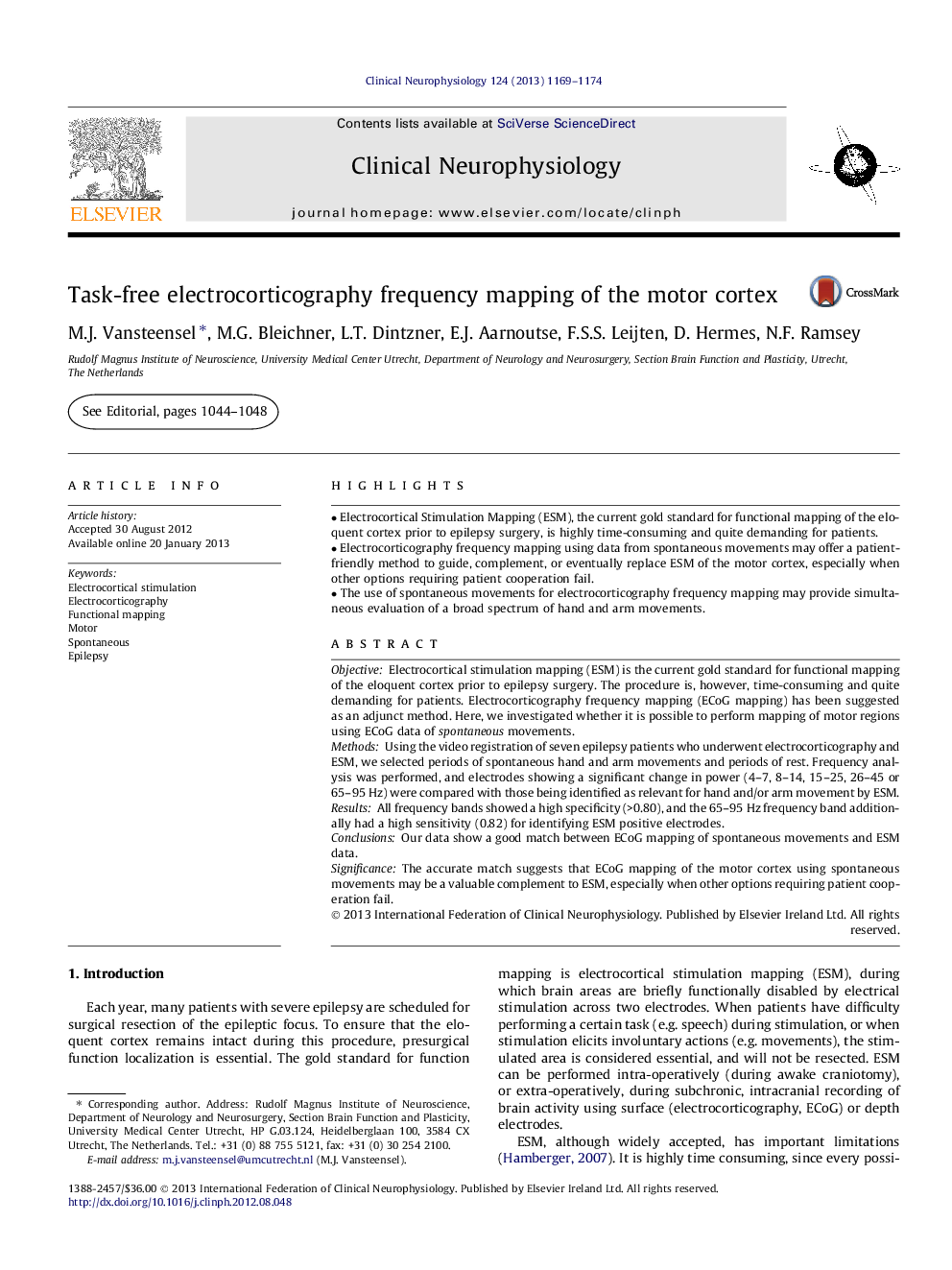| Article ID | Journal | Published Year | Pages | File Type |
|---|---|---|---|---|
| 3043872 | Clinical Neurophysiology | 2013 | 6 Pages |
ObjectiveElectrocortical stimulation mapping (ESM) is the current gold standard for functional mapping of the eloquent cortex prior to epilepsy surgery. The procedure is, however, time-consuming and quite demanding for patients. Electrocorticography frequency mapping (ECoG mapping) has been suggested as an adjunct method. Here, we investigated whether it is possible to perform mapping of motor regions using ECoG data of spontaneous movements.MethodsUsing the video registration of seven epilepsy patients who underwent electrocorticography and ESM, we selected periods of spontaneous hand and arm movements and periods of rest. Frequency analysis was performed, and electrodes showing a significant change in power (4–7, 8–14, 15–25, 26–45 or 65–95 Hz) were compared with those being identified as relevant for hand and/or arm movement by ESM.ResultsAll frequency bands showed a high specificity (>0.80), and the 65–95 Hz frequency band additionally had a high sensitivity (0.82) for identifying ESM positive electrodes.ConclusionsOur data show a good match between ECoG mapping of spontaneous movements and ESM data.SignificanceThe accurate match suggests that ECoG mapping of the motor cortex using spontaneous movements may be a valuable complement to ESM, especially when other options requiring patient cooperation fail.
► Electrocortical Stimulation Mapping (ESM), the current gold standard for functional mapping of the eloquent cortex prior to epilepsy surgery, is highly time-consuming and quite demanding for patients. ► Electrocorticography frequency mapping using data from spontaneous movements may offer a patient-friendly method to guide, complement, or eventually replace ESM of the motor cortex, especially when other options requiring patient cooperation fail. ► The use of spontaneous movements for electrocorticography frequency mapping may provide simultaneous evaluation of a broad spectrum of hand and arm movements.
